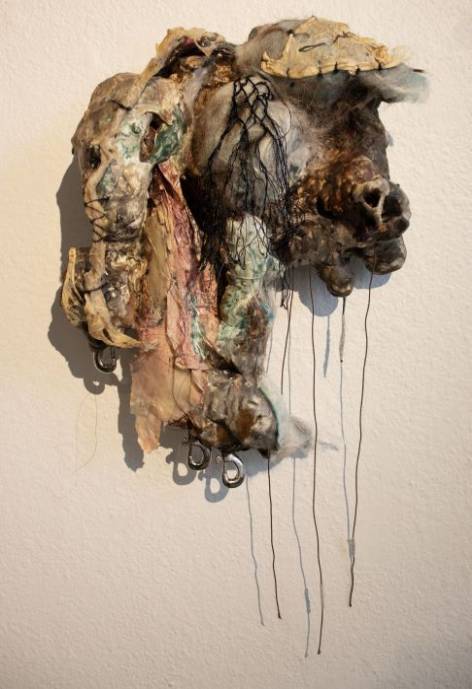Samara Johnson
Department of Visual Arts
Assistant Lecturer (FTRC), Foundations

B.F.A., Sonoma State University, 2013.
B.A., Sonoma State University, 2013.
M.F.A., University of Colorado at Boulder, 2020
Samara Johnson was born and raised in Moose Pass, Alaska. She holds an MFA in Drawing and Painting from the University of Colorado at Boulder, a BFA in Drawing and Painting, and a BA in French from Sonoma State University. Samara’s work is deeply influenced by her upbringing in Alaska, where she developed a profound connection to the natural world, inspiring her use of organic materials such as wool and horsehair in her art. She believes that creating art with these materials allows for a deeper connection to the emotional intelligence of animals and the artistic communities that have come before us.
Beyond her artistic practice, Samara engages with her community as both an academic and a volunteer. She is a dedicated educator, having taught at various institutions, including the University of Colorado at Boulder, Metropolitan State University, and the University of Wyoming, where she currently serves as an Assistant Lecturer. Her work has been exhibited nationally, including at the Arvada Center for the Arts, the Healdsburg Center for the Arts, and the Center for Visual Arts in Denver. Samara now resides in Laramie, Wyoming, where she continues to teach as an Assistant Lecturer at the University of Wyoming, create, and contribute to her community.
Artist Statement
Inner workings of the human body and mind gather throughout the space, reflecting
a
desire to see beneath the surface. Amorphous shapes represent fascia, the vagus nerve,
and
internal tissues, capturing the visceral reality of both human and non-human bodies.
Through
techniques like ripping, layering, and stitching, the forms embody the Polyvagal Theory,
suggesting healing of trauma through safe connections that reshape the nervous system’s
response to perceived threats.
Incorporating organic materials from prey and herd animals, such as sheep’s wool and
horsehair from equine therapy sessions, alongside inorganic elements that abstractly
mimic
bodily tissues, the network of pieces symbolizes the interplay between vulnerability
and danger.
This blend challenges conventional thinking, inviting viewers to engage with an inside-out
perspective that draws on the heightened sensitivity of prey animals, whose instincts
are finely
tuned to survival.
By merging these diverse materials, a hybrid landscape presents where life and death
intersect, reflecting the dual experience of being human and animal. The work embodies
a
psychological topography, evoking both the ancient and contemporary understandings
of trauma
and survival. It navigates the beauty and horror found in exploring the unknown, from
the depths
of our own bodies to the mysteries surrounding our mortality.

